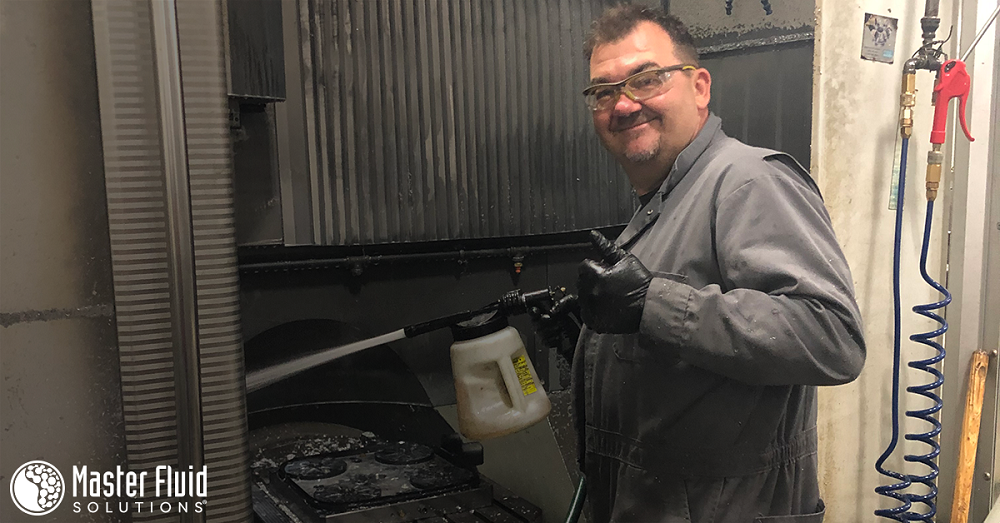The recent rise of COVID-19, commonly referred to as the coronavirus, has a lot of people wondering if they should deep clean their machines. The answer is yes.
One of the best measures that metalworking shops can take to ensure the health and safety of their workers is to regularly clean and disinfect anything that employees come into contact with.
Right now, no one even knows if the virus can last in the metalworking fluid matrix. No other viruses, including the flu, have been documented in metalworking fluid. However, if any metalworking fluids and in-process cleaners are suspected of being contaminated, they should be removed from the machines using the appropriate Personal Protective Equipment (PPE) and disposed of according to Environmental Protection Agency (EPA) regulations and local waste treatment guidelines.
Keep in mind that the Centers for Disease Control and Prevention (CDC) report that COVID-19 can remain for hours to days on a variety of surfaces, and that best practices dictate cleaning and disinfecting these surfaces regularly to help stop the spread. This includes machine surfaces, tables, doorknobs, handles, light switches, countertops, handles, desks, phones, keyboards, toilets, faucets, and sinks. Dirty surfaces can be cleaned with Master STAGES™ Whamex™ or Whamex XT™ and water prior to biocontrol agents.
For deep cleaning machines, we recommend running a solution of 2% Whamex or Whamex XT into the machine sump and running the machine as normal for 24 hours. Then, pump out the sump and remove all chips, residue, sludge, and swarf. Spray down the machine with a 10-15% Whamex or Whamex XT solution and scrub out these materials carefully. This will remove dirt and organic matter that could be hiding germs from the agents.
Protect Employees with PPE
When deep cleaning the machines, Personal Protective Equipment (PPE) should be compatible with the types of cleaners and biocontrol agents being used. After cleaning, remove the PPE carefully to avoid contaminating the surrounding area. Hands should be washed immediately after gloves are removed, and employees need to report compromised PPE, such as tears in their gloves, to their supervisor.
Remove All Fluid and Scrub Down Machinery
To deep clean the machinery, it first needs to be shut off and disconnected from the power supply after all the fluid is drained from it. Next, disposable tooling and parts should be removed and cleaned separately. It’s important to check with the manufacturer of the machine for recommended solvents and cleaning methods, including tools that might be needed such as scrubbers or steamers to sterilize parts, or pressure washers to flush out contaminants.
When deep cleaning, it’s also important to remember to scrub auxiliary parts such as tubing and pumps. These parts can carry contaminants back into the machines.
In fact, one best practice is to conduct a thorough deep cleaning of the entire shop, including the floors, restrooms, break rooms, and offices. After deep cleaning is completed, let employees know what they’re expected to do — including updating existing protocols for responding to routine issues, such as cleaning up spills. Set up basic cleaning supplies in common areas so that employees can easily address issues as they arise, and encourage employees to report possible contamination.
With regards to continuing to operate machinery and adding fluid, Master Fluid Solutions does not recommend adding disinfectants or bleach to the metalworking fluid solutions. Doing this can increase the risk of dermatitis, machine and part corrosion, and odors. The fluids should be run at their usual concentrate.
Further guidance for cleaning can be found on the CDC’s website, as well as the U.S. Occupational Health and Safety Administration (OSHA) website. These recommendations will help prevent the spread of COVID-19 and keep employees safe.
Should the company not have the resources to deep clean its own machinery or need further guidance, call +1 800-537-3365 or email us at [email protected].
